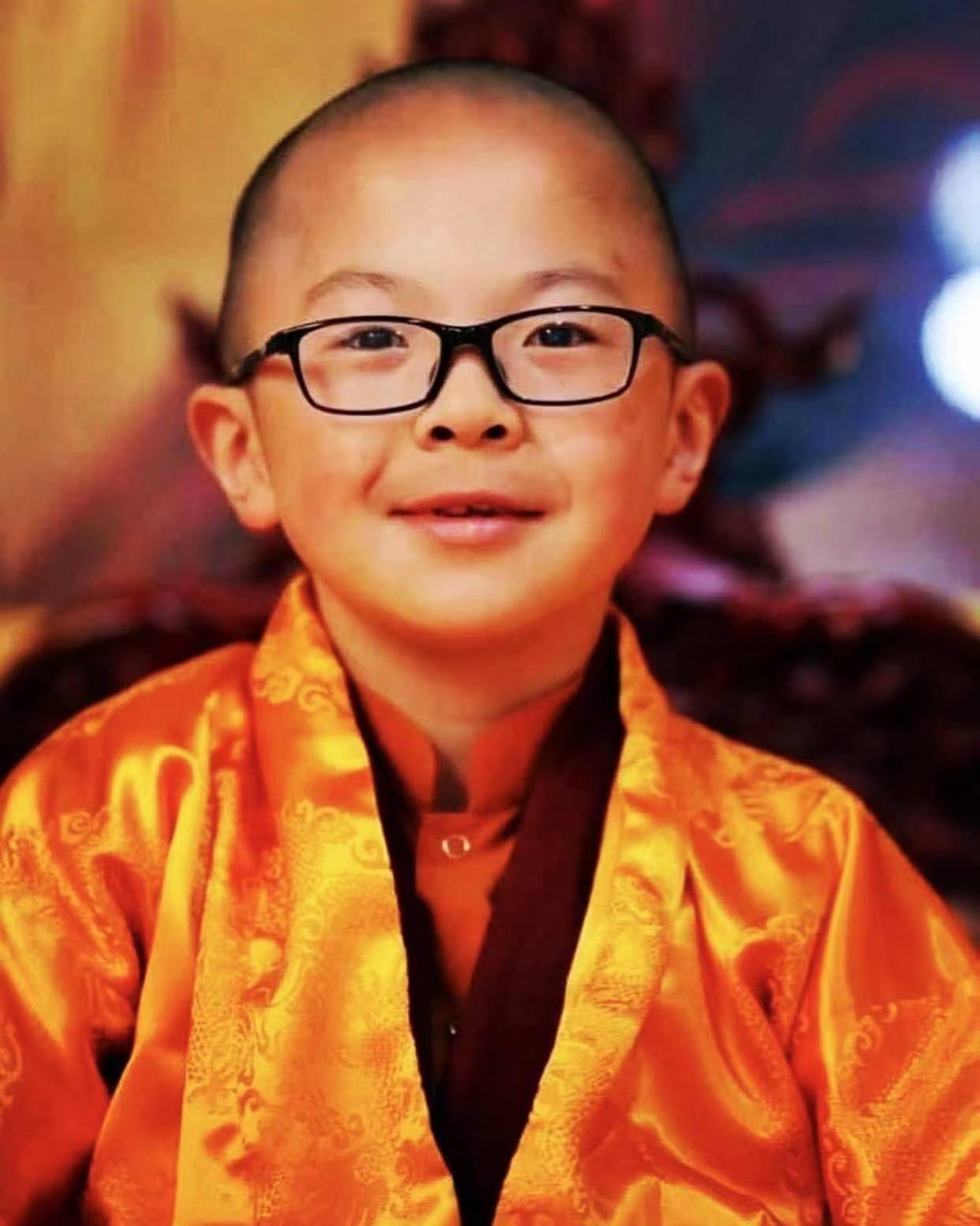Rigzin Kunzang Sherab 仁增昆桑喜热
Padma Lhundrub Gyatso 贝玛伦珠佳措
Drubwang Padma Norbu 竹旺贝玛诺布
1st HH Penor 一世 贝诺法王Karma Chophel Zangpo 噶玛曲培桑布
1st HH Karma Kuchen 一世 噶玛古钦法王Drenchog Karma Lhawang 噶玛拉旺
Gyurme Ngedon Tenzin 久美涅敦丹增
2nd HH Karma Kuchen 二世 噶玛古钦法王Padma Dongag Tenzin 贝玛埵昂丹增
Gyatrul Rinpoche 嘉楚仁波切Dongag Choekyi Nyima 埵昂确吉尼玛
3rd HH Karma Kuchen 三世 噶玛古钦法王Rigzin Palchen Dupa 仁增巴钦杜巴
2nd HH Penor 二世 贝诺法王Karma Thegchog Nyingpo 噶玛贴却宁波
4th HH Karma Kuchen 四世 噶玛古钦法王Jigmed Thubten Shedrub Choekyi Drayang 晋美图滇谢祝却吉札杨
3rd HH Penor 三世 贝诺法王Karma Kuchen Rinpoche 噶玛古钦法王
5th HH Karma Kuchen 五世 噶玛古钦法王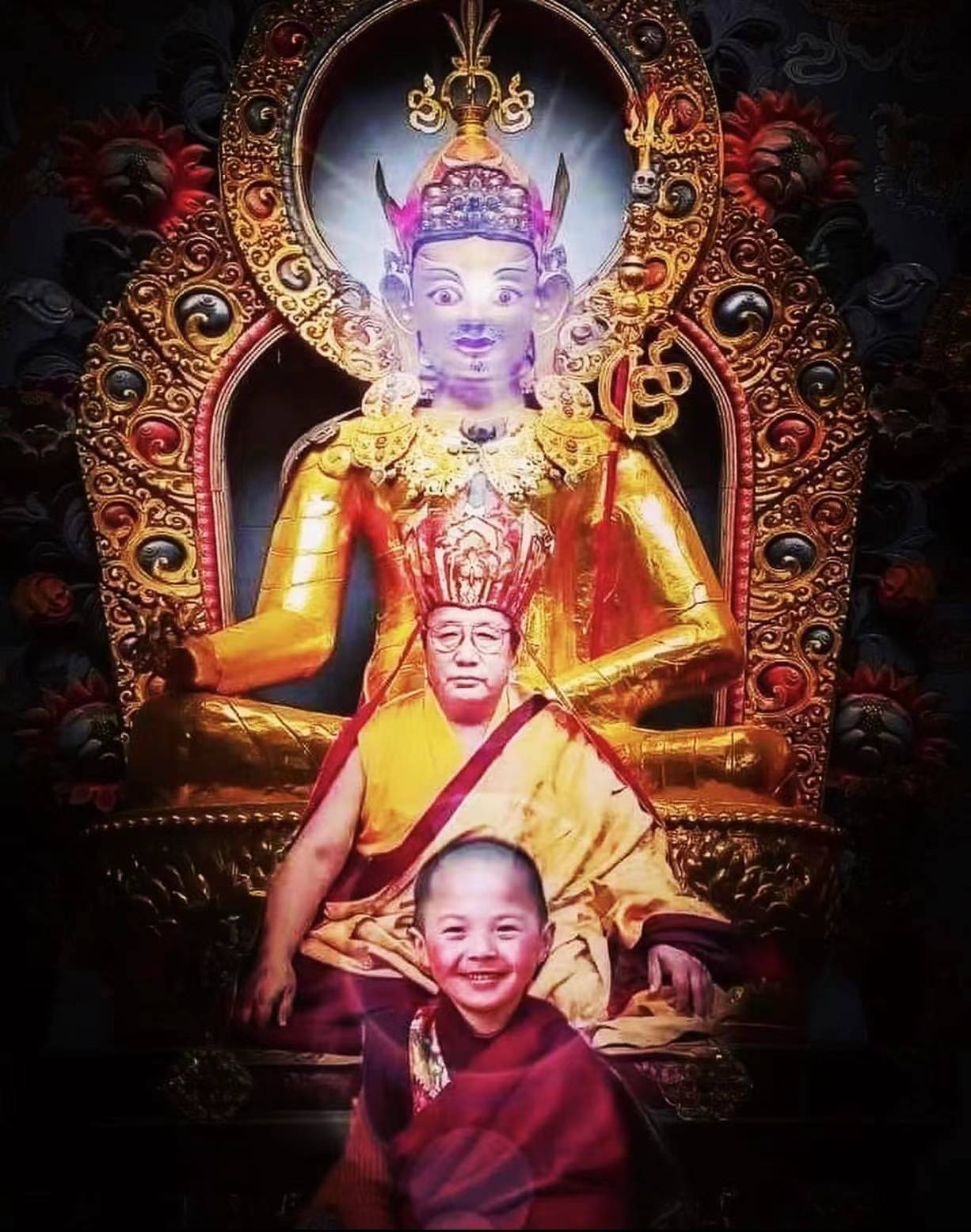
His Holiness Drubwang Pema Norbu Rinpoche 竹旺贝玛诺布法王
This biography of His Holiness is from the official website of the Palyul Lineage, palyul.org 本传记来自白玉台湾传承官方网站,www.palyul-center.org.tw
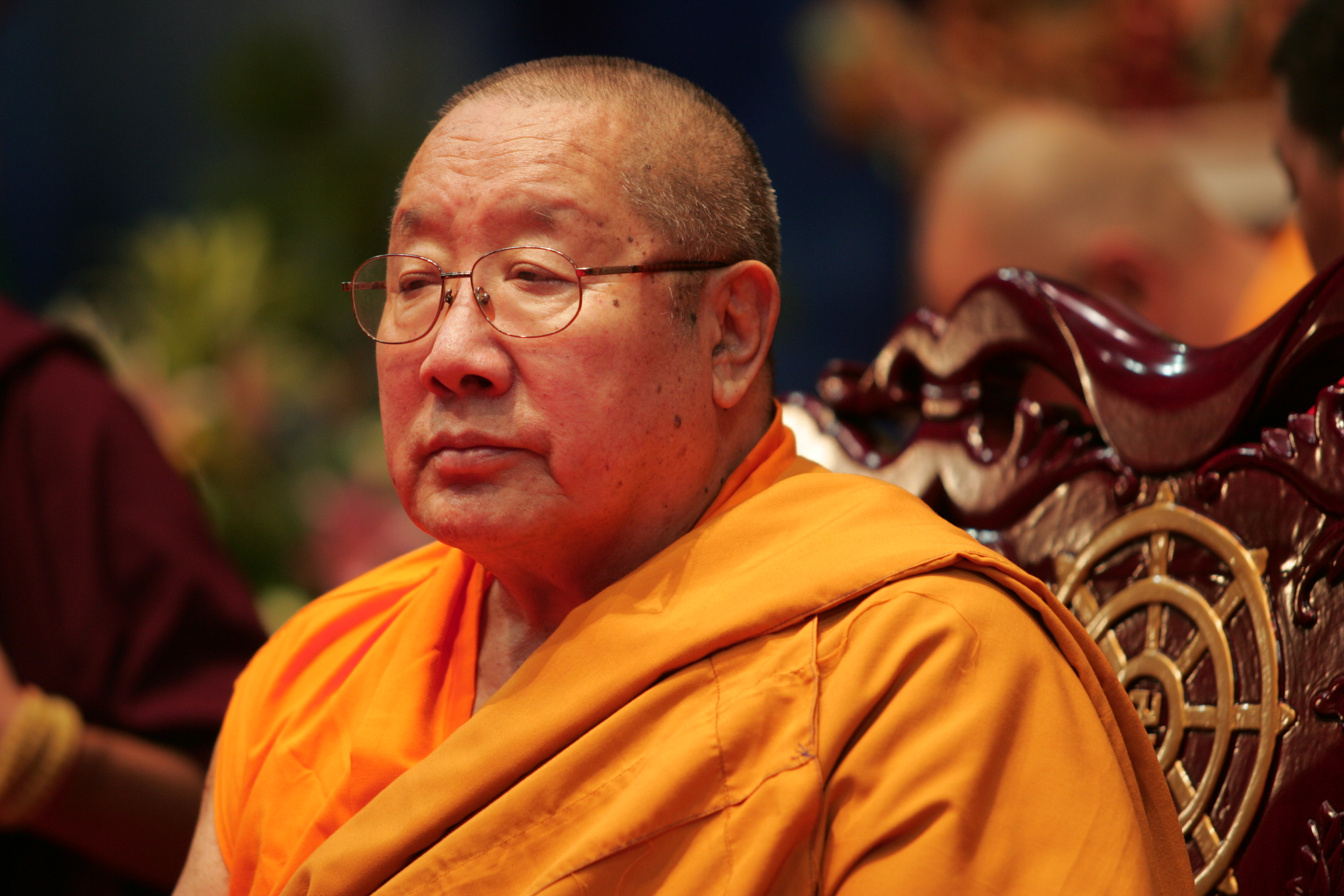
第一世卓望貝瑪諾布仁波切世殊勝十一化身中第七位;於西元1679年,藏曆第十一耀宗土羊年,誕生在阿丘鎮(金剛持明昆桑謝拉的誕生地)附近極為祥瑞的聖地佳。岩藏取者惹那林巴所取出的岩藏法中有一項預言:「噶陀南方牟尼具名生」「他若值遇曼寧怙主(甯瑪巴的具力大護法)岩藏法,將可以迅速獲得修持成就。」這預言又繼續說道:「南卻天法的曼寧怙主的教法持有者,名為貝瑪牟尼(牟尼,或為「摩尼」,皆是諾布的梵音,意即「珍寶」)。」這些預言揭示並協助尋獲第一世卓望貝瑪諾布仁波切的轉世。
第一世卓望貝瑪諾布仁波切承認自己是五百班智達之頂嚴─貝瑪拉密渣(無垢友)與金剛持明──伏藏師嘉稱寧波的化身。在孩童時代,他被人昵稱為「嚕毗」。當他在很年輕的時,于孟松地方晉見金剛持明──嚴藏取者祖古明珠多傑,並經允許開始修持南卻(天法)岩藏法。在二十一歲時,晉見金剛持明昆桑謝拉,並盡可能地接受許多珍貴法要。他的主要根本上師為白玉第二代法王貝瑪倫珠嘉措,在他座下,第一世貝瑪諾布仁波切接受了比丘戒和完整的瑪哈、阿努、阿底瑜伽等教法以及「卡傑」、「恭督」、「惹林(惹那林巴伏藏法)」等岩藏法,還有珍貴的「南卻」和「嘉稱寧波」的伏藏教法。從三位大師處,不僅受持了如是教法,也受持了「集經」、「幻化網續」、「心部三法」、「密意集會」與教傳等傳承法教要言之,第一世貝瑪諾布仁波切從他的根本上師處,入瓶水入瓶般、毫無遺漏地接受了所有白玉傳承中實修的教傳與岩傳教法。貝瑪倫珠嘉措傳授南卻岩傳、無二元大手印與大圓滿阿底瑜伽,以及掌中佛等教法給貝瑪諾布仁波切。之後,貝瑪諾布從前行至淨光妥噶(頓超),各個次第的根本修持悉皆圓滿成就,並確信以實證本然清淨見──「徹卻」(立斷)。接著,他並進一步圓滿證悟本初智能的四種見地(法性明悟、悟境日進、淨覺圓滿、諸法盡融法性)而獲得頓超的自然成就。因為他殊勝的證德成就,貝瑪諾布獲得「卓望」(具力成就自在)的榮銜。
卓望貝瑪諾布仁波切具足如海般的教證智慧,並從許多偉大的上師處接受了無數深廣的教法。他與尼薩的貢噶雷巴炯內以及噶陀的賈瑟蘇南杜伸互為師徒,相互傳手許多新、舊教派的灌頂和口傳。他邀請一切智卻及炯內、錫度仁波切來白玉達果。當時,錫度仁波切為喇嘛昆桑依喜舉行超渡法會,並為兩百多位僧眾授與比丘戒。
值此殊勝際會,卓望貝瑪諾布仁波切向錫度仁波切獻上無數供養。此外,為了表達對錫度仁波切及第十世夏瑪巴卻竹嘉措的敬意,他舉辦了長壽法會並獻上所有南卻天法、惹那林巴岩藏法的灌頂及喇嘛恭督的口傳。錫度仁波切則給予卓望貝瑪諾布仁波切「阿努瑜伽」的灌頂。
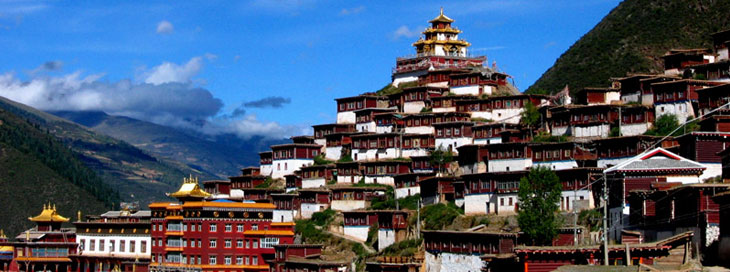
之後,貝瑪諾布仁波切在白玉寺院下方區域建造了一個新的閉關中心,並終其一生主要在此關房中閉關實修。在吉祥的時節,他會為極為廣大的弟子們灌頂、口傳及給予秘密口訣心要。有為數極多的弟子們展現了出生起、圓滿次第的成就瑞兆,圓滿了最高的瑜伽修持。
當時的德格王滇巴徹令敦請卓望貝瑪諾布仁波切擔任國師,邀請他造訪並加持他的宮殿──龍竹登。在此次造訪中,卓望貝瑪諾布仁波切表達了他要依照薩迦派的傳統,表演普巴金剛舞的意願。雖然對此傳承不熟悉,且從未練習過此喇嘛舞,然而仁波切仍舊將此普巴金剛喇嘛舞展現得完美無暇,許多幸運的觀眾還見到仁波切身體騰空、足不履地。在此同時,遠在中藏的薩迦達欽仁波切遙望東方,讚歎道:「今天,在康地東方有一大菩薩正在做普巴金剛喇嘛舞,令無數見聞者悉皆解脫!」
當他造訪德格倉喇時,卓望仁波切建立了定期舉辦「通珍根敦利布(觀世音七世加持丸)」偉大成就法會的傳統。他在當地利益眾生的覺悟事業深深地為當代偉大的成就者,諸如:一切智錫度仁波切、蘇貞初欽仁千等所稱讚。
卓望貝瑪諾布仁波切的主要心子為噶瑪劄西及多傑劄西。有許多他的弟子們在一生中達到圓滿的證悟。
知道已經達成利益眾生及護持聖教的神聖使命,卓望貝諾仁波切於西元1757年,也就是他七十五歲時,在種種成就的瑞兆中,將他的覺心融入法界。他神聖的金剛肉身舍利被安置在他秘密關房的一座木制舍利塔中。
第二世卓望貝瑪諾布仁波切巴千都巴,也叫做「卓望貝瑪昆桑諾布」,是白玉傳承第九代的法座持有者,也是法王十一位殊勝化身中的第十位。第一世貝諾法王圓寂前,指著室外的一棵柏樹說:「當此柏樹初生果時,我之轉世亦必在來。」後來,果如前是法王的預言,殊勝轉世果真於那時再來。第八代法王──噶瑪古千三世多雅卻吉尼瑪曾在夢中見到一座舍利塔,塔中瓶門內有蓮花牟尼寶珠,這也預記了第二世貝諾法王的轉世。另外,尊貴的導師──第一世蔣貢工珠(康楚)仁波切羅卓泰耶和許多已經照見自性的諸位大師們都一致確認貝諾法王二世的轉世無誤。而與第二佛龍欽巴尊者和無垢友尊者無二的噶陀堪欽雅嘎仁波切雅吉旺波貝瑪雷則也以智能觀照化身(貝諾法王)為「金剛手菩薩、卻倫噶當巴法王、赤松德真王的天子依喜洛巴、蓮師二十五弟子中的拉龍巴吉多傑、大伏藏師桑傑林巴、第一世多足千仁波切昆桑賢遍、第二世多足千仁波切多足吉美彭措炯內」的歷代轉世。九歲時,仁波切親見蓮師並蒙受加持,並從八代法王卻吉尼瑪處受皈依戒,聽聞「惹那林巴伏藏」、「南卻天法」、「嘉稱寧波伏藏」、「噶瑪林巴伏藏」等伏藏教法等一切種類,還有多康及衛藏地區的二重法軌和教傳傳承之一切法門,以及甘珠爾(大藏經)和大寶伏藏等岩傳。
仁波切二十一歲時,上師噶瑪多雅卻吉尼瑪圓寂,仁波切至為悲痛。印為尚未從上師處學完「八大黑嚕嘎心要」,後來上師連續三天入夢中傳授,自此仁波切具有超凡之能力與迅速閱讀的能力。加通錫度仁波切表示,第八代法王已經以本智心印灌頂給其心子貝諾法王。
仁波切由堪布雅嘎那,得到種姓寶冠,執掌從龍樹菩薩以來的戒律傳承,為上座長老;從米龐仁波切和蔣貢工珠仁波切處得到許多成熟解脫的甘露法教,全部都修學圓滿。
法王於一生中,對於具足信心的有緣弟子敷演多次大灌頂法會。特別又因為夢兆,傳授過五次的大寶伏藏法。仁波切亦是精通五明者,也教導弟子學習。
伏藏導師桑傑林巴預言過白玉大圓滿傳承將會出現佛學院,宏揚顯密二乘的教法。一如其預言,第二世貝諾法王再1922年于白玉寺中創建佛學院。此外,法王也興建許多新的寺院。
第二世貝諾仁波切在修持方面,現前明空本淨之本智,獲得光明頓超之驗相增長之相,並擔負起禦眾持明憤怒 金剛及 教授深法的重責大任,對於白玉教法的傳承和光明實體之教法都有直接或間接無上的復興功勞。
上師堪布雅嘎思念仁波切,仁波切及以其身示現於空中。雅嘎仁波切詢及其身體狀況及其它;仁波切表示:他已經能夠自在出入法界,唯一遺憾的是未能多隨侍上師,但是承諾上師將迅速再來。1932年三月,也就是第三世法王出生的那年,第二代法王回歸法界。時年四十七歲。經由堪欽雅嘎仁波切多次勸請,果如所願,殊勝化身於該年十二月亟速降臨,應化度眾。
第三世貝諾法王公認為印度大班智達貝瑪拉密渣(無垢友)化身,於西元1932年(藏曆水猴年)十二月降生在東藏康省(西康)一個稱為波沃的地方(古稱波密,又稱波窩)。父親叫做蘇南久美,母親叫做宗吉。此村落在寒冷乾燥的冬天是看不到花朵的,但是仁波切誕生時,此地卻出奇地綻放芬芳的花朵。根據第五世卓千仁波切以及噶陀堪欽雅嘎仁波切的預言,指認出第三世貝諾法王。第五世卓千圖登卻吉多傑如是說出貝諾法王的出生地:
聖地部波上方之處中 妙主岩山任運莊嚴頂
種種綠樹海寨莊嚴飾 極淨清涼大河南邊流
父母蘇南吉其名具者 吉勝慧兒于水猴年生
教眾藥石善名妙善升 卓千王世卻吉多傑志
五歲時,貝諾仁波切被迎至西康白玉祖寺,在上一世秋竹仁波切圖滇卻吉達瓦和第十代法王──第四世噶瑪古千仁波切噶瑪帖秋寧波的主持下,在其前世的法座上行坐床典禮,正式認證他為第二世貝諾法王巴千都巴(1887 ~ 1932)的轉世,及成為第十一代白玉傳承法座持有者。
一位當代精通大圓滿的卓越行者──堪布雅嘎(噶陀堪欽雅嘎)預見此新轉世的特殊使命,而給予此孩童皈依戒、文殊菩薩灌頂和一尊神聖的佛像,並為他寫下至今仍被全球成千上萬弟子持誦之長壽祈請文。
甯瑪巴的六大寺廟之一──白玉南卻祥丘卻林,乃在當代德格王拉千蔣巴彭措及翠千桑給登巴的贊助下於西元1665年興建。蓮花生大士所預言的岩藏取者及卓越的大圓滿上師──持明昆桑謝拉,是此寺的開山祖師。昆桑謝拉是大成就者噶瑪恰美仁波切與南卻天法虛空藏的岩藏取者──德千祖古明珠多傑的入室弟子。由於上師的加持和自勵,此寺乃迅速地發展成西藏最大的寺廟之一。在子後幾個世紀,白玉寺(通常被稱為「東方輝煌的白玉」)在歷代傳承持有者的領導之下,已成為虔信教法與精進修持都極負盛名的道場。千百僧眾達到虹光身及其它精神成就。貝諾法王的職責在監督此主寺與遍佈全藏四百座以上的分支子寺和世界各地的佛學中心,以及教育包括超過三十萬的出家僧尼的四眾弟子
貝諾仁波切童年時期是在白玉和達果度過的。在那,他從負責將他培育成為第十一代傳承持有者的第十代持有者噶瑪德卻寧波及其它珍貴的上師處研讀及接受教法。當他還是小孩子的時候,有一天,他拿著一支珍貴的金剛杵玩耍,一不小心將之掉落在地上,摔成了兩截。由於不願上師責備,他用自己的唾液將此兩截段落的金剛杵重新粘合起來。此金剛杵卻因此比以前更加堅硬。在另一個法會上,他不小心將手中的金剛鈴掉落在石板上。在場大眾都認為此金剛鈴必碎無疑,但仁波切將他拾起後,發現它卻是完好如初的,且聲音比過去還要宏亮。
當仁波切還是一個小男孩時,有一天,一位老年人走到仁波切面前,堅持要仁波切為他修頗瓦法。仁波切很天真地答應並依法修持。過了一會兒,仁波切驚訝地發現這位老年人已經往生了。他對著躺在面前的屍體,再度修法以挽回老人家的性命。當老年人蘇醒之後,仁波切總算松了一口氣。而老年人卻說:「天啊!仁波切為何把我叫回來?我已經在阿彌陀佛的西方極樂世界淨土了!」另一件事也說明了仁波切在稚齡時所顯的神變。仁波切在孩提時期曾將他的足跡深深烙印在一塊石頭上,這塊石頭至今仍可見到。
後來,仁波切又從多位偉大的上師、經師堪布等那學得各種法要,包括:南卻傳承大圓滿之掌中佛、八大黑嚕嘎、大寶伏藏、惹那林巴伏藏(惹林)、大圓滿、大園滿心要法及秘密護法等等的教法,並依教修持,獲得成就。
十三歲時,在達果地方的閉關中心,上一世貝諾法王的寢室中,在五位主要堪布和比丘的見證主持下接受圓頂,正式剃度,法名「豆雅謝祝天津丘雷南嘉」,意為「經續教法修持尊勝最高持有者」。
在達果,又隨著上一世宗薩仁波切蔣揚欽哲卻吉羅卓學習阿努瑜伽之引導,以及貝瑪姬美的貝瑪林巴九部導引、十三章噶瑪恰叉的「阿」法。當受法時,法王以舌頭在口中編出錯綜複雜的金剛結。這樣的學習持續到1958年仁波切二十七歲之時。
在仁波切眾多上師中,他與上一世秋竹仁波切圖登卻吉達瓦維持著一份非常親近的關係,並從上師處獲得極大的利益。十三歲時從圖登卻吉達瓦處受沙彌戒,二十一歲受比丘戒,其他甯瑪巴的重要口傳與灌頂也由秋竹仁波切賜予。年老視衰的秋竹仁波切常說:「如果我無法將完整的教法,口傳和灌頂授與貝諾仁波切,則我將沒有真正地活過此生。」之後,貝諾仁波切在塔唐地方和他的上師秋竹圖登卻吉達瓦進行長期的閉關,從基礎的前行至最深奧的大圓滿,他修持直至赤裸裸的法性現前為止。近代甯瑪巴第二位法王──頂果欽哲法王曾經在一個場合上說:「貝諾法王已經是一位超越三昧耶的聖者。」四川五明佛學院的精神導師──如意寶法王堪布晉美彭措也經常讚歎貝諾法王已為肉身佛
在一個成就法會上,許多僧眾看到曼達盤上出現彩虹,且嘎巴拉(顱蓋杯)上甘露溢流。有一次在舉行「瑪貢」的成就法會上,空行母的供養餅乾很明顯地顫動著。另一次,在接受甘珠爾(大藏經)口傳時,貝諾仁波切憶起導師釋迦牟尼佛坐在河邊,為他以及上千的弟子開示深奧的教授。根據堪布雅嘎所言,仁波切也是金剛手菩薩的化現;仁波切的記憶很清楚地證實在過去世他曾經以金剛手菩薩化現在世尊座下修學。
能去拉薩朝聖,尤其是參拜聞名的覺沃佛像(大昭寺的世尊等身佛像)是每個西藏人的夢想。在1956年,仁波切二十五歲時,與一大批隨從前往中藏旅遊。在那,仁波切拜訪了很多很多寺院及那些數說著西藏輝煌歷史的古寺聖地。仁波切也在達賴喇嘛陛下的寢宮──布達拉宮,接受達賴喇嘛的長壽灌頂。再大昭寺的祈願法會中,仁波切也以茶及財物供養僧眾。那時,拉薩的情勢已經十分緊張,仁波切懷著沉重的心情,返回白玉祖寺。
預見西藏不可逆轉的趨勢,以及此事對佛法存亡的威脅,貝諾仁波切與其他三百多人逃避至印度東北邊境。然而,許多隨行的人仍死於途中。這是一段漫長而危險的旅程。子彈曾打到仁波切腳邊引起陣陣煙硝,手榴彈曾經滾近仁波切,卻當仁波切走後才爆炸。許多跟著仁波切逃亡的人們為了生存,只好以動物為食。仁波切不忍無辜動物被捕殺,只好走在前頭驅趕任何可能的犧牲品。最後,他和隨行者終於抵達印度東北方安置。在1961年,仁波切和隨行的六百人抵達南印度的麥索地方。仁波切逃離西藏的目的,主要是在於使佛法的焰炬更加熾亮,以救度一切有情眾生於無明的黑暗之中。為此,貝諾法王在麥索的貝拉古貝這重建偉大的白玉寺廟──「勝乘南卓林」這絕非易事,在興建之初,仁波切手中僅有零零星星三百盧比。在這,法王要重建他的佛行事業與寺院。仁波切僅有有限的物資,但卻有無限的資源──堅毅不拔的勇氣與決心。
當時跟著仁波切的一些人無法瞭解仁波切的遠見,無法洞澈仁波切智慧法海的一滴,堅持要求仁波切縮小建寺的規模。因為在當時,僅有極為少數的比丘與仁波切在一起。今日,在南印度的南卓林寺已成為世界上規模最宏偉的藏傳佛寺之一,然而卻仍有許多僧俗四眾在大法會時連座的地方都沒有。現在,三十多年後的大家都驚歎並感恩仁波切當時的真知灼見。
很少地位如同貝諾法王的上師會經歷過貝諾法王曾經歷過的艱辛苦痛。在烈日灼灼之下,仁波切和其他工人與僧眾一同搬石挑泥,手甚至因而流血疼痛。由於沒有自來水和柏油路,使得建築的工作更為艱辛。仁波切甚至要親自至遠處取水。
有一天,在烈日驕陽之下,有一個人來到了貝諾仁波切和僧眾工作的地方。他興高采烈地走向仁波切,說道:「我從很遠的地方來,為的就是能看貝諾法王一面,我能去參見他嗎?」「喔!當然可以,那有什麼問題?」仁波切這麼說完之後便引領他到自己簡陋的房間,說:「好了,我能為你效勞嗎?」那人當時世既驚訝又窘困。他從來沒有想到法王竟是如此平易近人。他心目中總認為貝諾法王是不一樣的,必定是穿著莊嚴、坐在珍貴的法座上的。事實上,仁波切是真正的滿願如意寶,一切都展現在他所辛勤工作的平凡土地之上。
年復一年,仁波切以其源源不絕的毅力、精力以及大願,不為橫在眼前的困境、障礙所擾,平穩地跋涉在前進的道路上。仁波切所挹注的一切並沒有白費,今日在南印度麥索的南卓林寺,已有超過三千人的僧眾,堪稱世界最大的寧瑪寺院。法王在此重建僧團制度和結夏安居的傳統,每年都舉辦文武百尊的一千供養法會,普巴金剛法會和藥師佛法會一億壇。其中藥師佛法會中,頻獻瑞應,彩虹自曼達供盤中升起,嘎巴拉中甘露漫溢,法王口中異常甘甜。因為不忍見到佛陀法教,特別是舊譯甯瑪巴的教法瀕臨斷絕的危機,仁波切在1978年建立雅久寧瑪佛學院。此學院至今已成為進階佛法教育與研究聞名的中心。
這實為貝諾法王無暇佛行事業的另一莊嚴
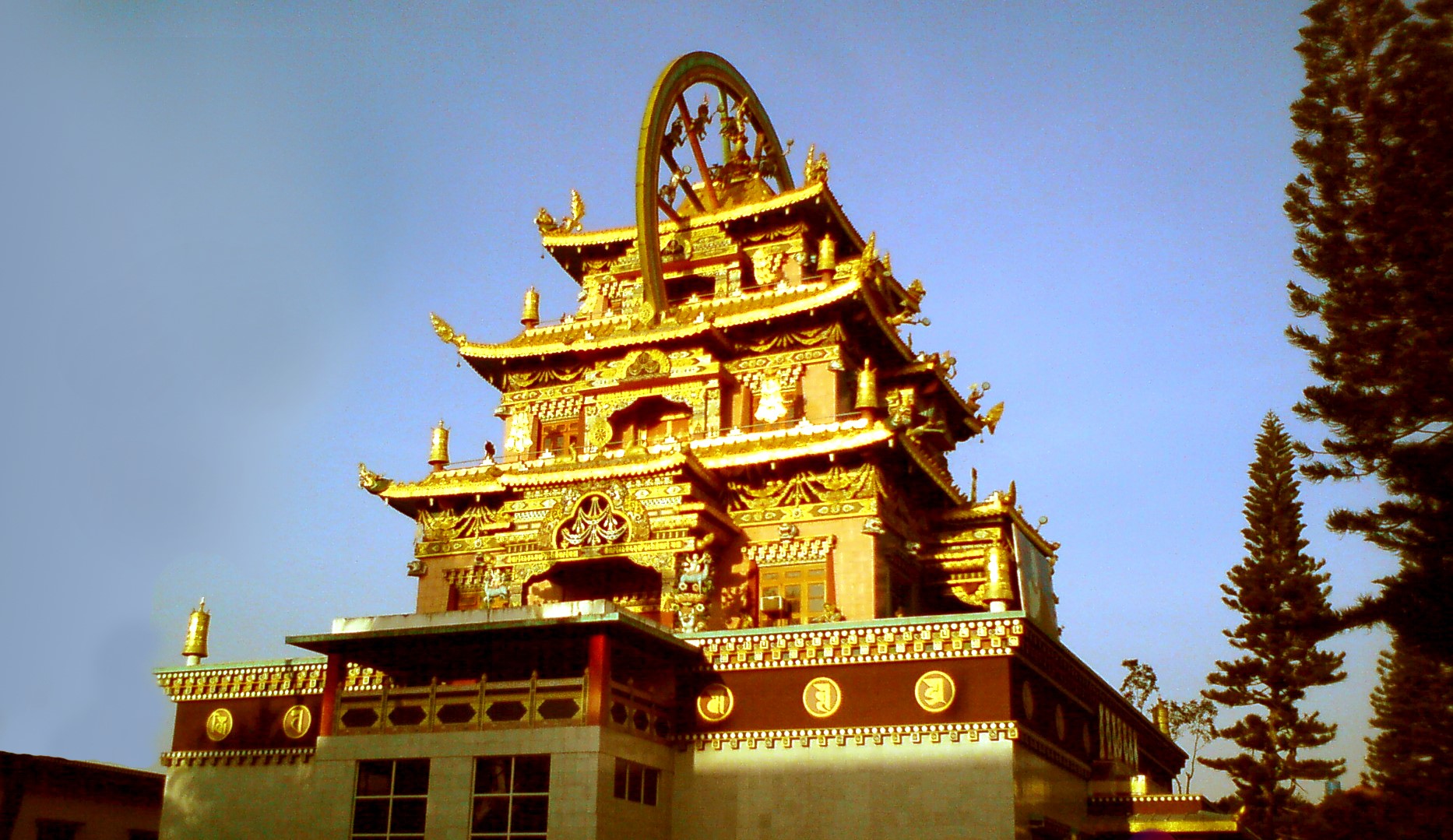
南卓林也有一閉關中心,在那兒有著約三十位左右的比丘進行著依循傳統的三年閉關。貝諾仁波切親自指導他們大圓滿龍欽心髓及岩藏者明珠多傑所取出的南卻虛空藏法。每隔三年,就有一群閉關合格的金剛阿闍黎出關。每年秋天,仁波切會舉行一次為期一個月的閉關,參加者是比丘、比丘尼和居士們。仁波切每次都親自傳授四加行、氣功及大圓滿。所有的研讀課程總配合著修持,所以貝諾法王的寺廟是密集研讀與修持的理想場所。這就是貝諾法王的宏大願力所致之故,也是法王所不斷強調的。
現在已經有約超過千人的小沙彌進入基礎的小學中就讀,在學校中學習藏文和英文的讀寫等基礎課程,以及佛理的基礎研習和加行。這個數字每年都以一百至數百不等的速度增加著,因為許多流亡海外的藏民都將小孩送至寺院中以接受教育和砥礪人品。
1997年,仁波切興建了一座尼庵──「措嘉謝拉林」,現有約莫三百至四百的尼師在此受教育與研修佛法。貝諾仁波切也另外興建了一座養老院,在那有許多的老人們居住與修持。在樹下或在法王為了祈求世界和平所興建的兩組八大佛塔旁邊繞行,總可以見到他們手中持著轉經輪或念珠。
法王的慈悲甚至惠及印度當地的居民。他造橋鋪路以利益當地人。他所收到的供養,悉數轉而花費在上述的計畫中。現在,貝諾法王更為解決當地上萬居民的醫療問題,在當地籌畫設立西醫和藏醫都有的綜合性醫院,現在已經開始動工。無論在西藏或印度,仁波切都在季雨不來時以祈降及時雨聞名。當地的印度居民,因此給法王上了個昵稱──「雨喇嘛」。
貝諾仁波切曾經給予包括多次大寶伏藏灌頂和更多次的甯體與南卻的教法。他是第一位、也是至今唯一一位曾在西方給予過大寶伏藏灌頂的西藏上師。仁波切以其無盡的方便與能力深深位大眾所景仰。對法王虔誠的追隨弟子們,特別是在他照顧下生活的僧眾而言,法王不僅是上師、父親、醫生、心理分析師,甚至也扮演著身心治療師的角色。
法王是身具足清淨戒體的比丘,至今以未超過兩千五百位以上的僧眾傳授出家戒。除了授與教法以及灌頂之外,仁波切也為人們提供各類問題的解答。日復一日,由早到晚,法王無私地利益著在世者、臨終者與往生者。
仁波切不僅重建了白玉主寺和過去世中建立的白玉佛學院,在印度創辦南卓林寺和雅久寧瑪佛學院,漸次地修復傳承中各個亟待修復的子寺,並且在包括臺灣、香港、澳門、大陸各地、新加坡、馬來西亞、菲律賓、美國、加拿大等佛學中心,近年足跡甚至履及希臘、德國、法國等歐洲國土。仁波切不辭辛勞地奔波於印度、喜瑪拉雅山區、東南亞和歐美的土地上,為的就是將佛法的加持傳佈至世界各地,讓世界各地的眾生都同受法益。
1993年,在印度佛陀成道處──菩提迦耶的金剛座所舉行的全甯瑪巴祈願世界和平的「甯瑪巴傳召祈願大會」(Nyingmapa Molem Chenmo Ceremony for World Peace)上,來自世界各地的甯瑪巴碩彥,一致推舉貝諾法王為繼「敦珠法王」與「頂果法王」之後,當今甯瑪巴的掌教法王。這樣的殊榮乃實至名歸也!因為仁波切為了教法與眾生的利益,展現了文殊菩薩著灼智、觀音菩薩的慈悲與金剛手菩薩的勇勢!
祈願法王能與虛空同壽,引領所有沉浮於輪回之中的一切有情至究竟解脫的彼岸!!
Recognition
The Third Drubwang Pema Norbu (“Penor”) Rinpoche was born in the Powo region of Kham, East Tibet to Sonam Gyurme (father) and Dzom Kyi (mother) during the twelfth month of the lunar calendar the year of the Water Monkey (1932). His birth took place during the most bitter, cold, bleak and dry part of the winter season, a time when nothing grows and the land is blanketed with thick, deep, heavy snow. Yet at the time of his birth, sweetly-scented flowers burst into blossoms all around the home of the infant tulku. Moreover, two search parties for the new tulku, one sent by Dzogchen Rinpoche and one sent by Khenchen Ngagi Wangpo, met each other at the same time at this same house, thus confirming the recognition without doubt. Communications and travel in the high mountains of Eastern Tibet were not as speedy as today so this was considered to be a very auspicious sign.
Khenchen Ngagi Wangpo Rinpoche foresaw the exceptional destiny of the new incarnation. In 1936, the year of the Fire Mouse, the young Pema Norbu (“Penor”) Rinpoche was invited to the Palyul monastery where he took refuge with the great and learned Khenpo. Khenchen Ngagi Wangpo Rinpoche performed the traditional hair-cutting ceremony and gave him the name “Dhongag Shedrup Tenzin.” Khen Rinpoche then granted him the long life empowerment of Amitayus and composed the long-life prayer which was chanted daily by thousands of Penor Rinpoche’s followers all over the world through until the time of his parinirvana.
Rinpoche was formally enthroned by his master Thubten Chökyi Dawa (1894-1959) [the second Chögtrul Rinpoche], and Karma Thekchok Nyingpo (1908-1958) [the fourth Karma Kuchen Rinpoche]. In time, Penor Rinpoche would become the Eleventh Throneholder of Palyul Monastery with its more than four hundred branch monasteries. He spent many years at Palyul, studying and receiving teachings from numerous masters and scholars. He received mind-to-mind transmission from Lungtrul Rinpoche Shedrup Tenpai Nyima. He also received training and instructions from the Fourth Karma Kuchen Rinpoche, the Tenth Throneholder, who carefully prepared him as his successor. In turn, His Holiness Penor Rinpoche trained the Fifth Karma Kuchen Rinpoche.
There are many instances demonstrating Penor Rinpoche’s extraordinary powers even as a young child. On one occasion he was playing with an old and precious vajra when it suddenly slipped through his fingers and dropped to the ground, breaking in two. Fearing a reprimand from his teacher, he quickly glued it back together with his own saliva, making the vajra stronger than ever before. A similar incident occurred later on when, during the Chasum ceremony, he accidentally dropped his ritual bell onto the stone floor. Everyone assumed that the bell had shattered, but when Penor Rinpoche picked it up, it was unbroken and rang even more sweetly than before. At the age of 15, Penor Rinpoche left his footprint in stone near Dago retreat monastery above Palyul where it can still be seen today.
Once while he was still young, Rinpoche was approached by an old man who insisted that he practice Phowa for him. Innocently he complied with the request. At the end of the practice, he shocked to see that the old man had passed away – the Phowa had worked only too well! Immediately he started to practice again, to revive the corpse lying there in front of him. To his immense relief, the old man came back to life, but instead of thanking him, he shouted, “For heaven’s sake, why did you bring me back? I was already in the Pure Land of the Buddha Amitabha!”
For many years following, the old man’s great grandson worked at Namdroling Monastery in India.
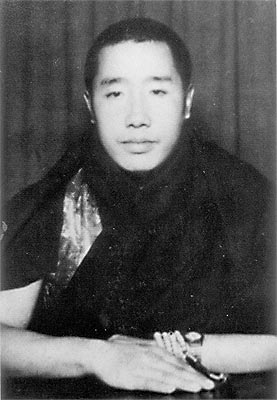
Education
Penor Rinpoche studied with many lamas, benefiting most deeply from the warm and close relationship he enjoyed with his great master, theSecond Chögtrul Rinpoche. At the age of twelve, in the water sheep year 1944, Penor Rinpoche began to receive the most important transmissions and empowerments of the Nyingma School. From Chögtrul Rinpoche he received the Great Empowerment of the Kagyé and the Rinchen Terdzö empowerments, transmissions and secret sealed protector empowerments. From Karma Kuchen Rinpoche, he received the Namchö, the terma revelations of Ratna Lingpa and the major empowerments of the cycles of Kagye and Lama Gongdu.theSecond Chögtrul Rinpoche. At his lay ordination, Chögtrul Rinpoche gave him the name Thubten Lekshe Chökyi Drayang, “Upholder of Buddha’s Teaching with the Eloquent Speech of Melodious Dharma.” At Dago retreat monastery, he received and engaged in the Namchö Dzogchen preliminary practice teachings of Sangye Lakchang, “Buddha in the Palm of the Hand.” He also learned general subjects, including writing, poetry, astrology and medicine, and went on to study the sutras with Khenpo Nuden, Khenpo Sonam Dondrup and Khenpo Gondrup.
At the age of thirteen, he received novice (getsul) ordination and with it the name “Dongak Shedrup Tendzin Chokle Namgyal” (All-Victorious Holder of the Teachings of Study and Practice of the Sutras and Tantras). At twenty-one he took full (gelong) ordination with his master at Tarthang Monastery and received a vast number of teachings covering all the essential instructions and empowerments of the Nyingma tradition. This lineage of the vinaya is a very pure one, transmitted to Tibet by Shantarakshita during the time of Padmasambhava.
At the time of his ordination, Chögtrul Rinpoche offered Penor Rinpoche the yellow robe that had been treasured and handed down by generations of lineage holders. Despite the tremendous difficulties of escaping from Tibet, Penor Rinpoche was to carry this robe with him all the way to India while leaving behind many other precious possessions. As a direct result, during his life in exile he was able to ordain more than 10,000 monks and nuns, so making a priceless contribution towards the stability of the vinaya vows and Vajrayana practice during this age of degeneration.
From the great Khenpo of Kathok monastery, Khenpo Lekshe Jorden, Penor Rinpoche received many transmissions. One special one was the Kham tradition of the Anuyoga empowerment of the Do Gongpa Dup through Mokton Dorje Palzang’s famous empowerment ceremony “The River of Honey.” Penor Rinpoche also received the ancient tradition of Kathok monastery and at the same time the empowerments, transmissions and teachings of Jamgon Kongtrul’s “Treasury of Essential Instruction;” Tertön Dorje Lingpa’s “Condensed Utterance of the Lama;” the Dorje Lingpa terma “Hung Kor Nyingtik;” Ngari’s Complete Condensation of Kagye; and Lerab Lingpa’s great terma revelation, the cycle of Tendrel Nyesel. The transmissions he received from Karma Kuchen Rinpoche included Nyelpa Delek’s Anu Yoga empowerment from the Rinchen Trengwa tradition.
Another of his teachers was Khenpo Khyentse Lodrö, also known as Khenpo Nuden, from Kathok. In a forest above the Dago retreat centre, Khenpo Khyentse Lodrö performed the Drupchen of the Anuyoga Dupa Do, at the same time giving the very first transmission of his newly written four volumes on Anuyoga. Khenpo told the following story. Before the second Drubwang Pema Norbu had passed away, he had given the Khenpo a small knife. At the time he had not given it much thought, but now he realized what this had really meant. The knife represented the sword of wisdom, and when he handed it to him, it was as if Pema Norbu was granting the Khenpo his blessing to finish writing these important new treatises, so as to be able to transmit them to his next incarnation.
From Khenpo Pema Jigme, a learned Khenpo from the Palyul tradition in Golok, Penor Rinpoche received the nine volumes of Jigme Lingpa’s collected works, the thirteen chapters of Karma Chagme’s “Ah Cho” and the collected works of So Wangdrak Gyatso. While he was receiving this transmission, Penor Rinpoche began to make intricately woven knots in blessing cords with his tongue, something which is done only by the most highly accomplished masters. He continued to make these special blessing cords until 1958. They were renowned for affording powerful protection when worn. One such cord is kept and treasured by one of his attendants today.
Around this same time, Penor Rinpoche happened to write the syllable Ah on a white conch shell. Once the ink had worn away, the syllable remained embossed on the shell. This shell is still kept as a object of veneration in Palyul monastery in Tibet.
Having received all the transmissions of the Kangyur and Tengyur, as well as completing a Vajrakilaya retreat, Penor Rinpoche entered into retreat with his master Chögtrul Rinpoche. To go into retreat with one’s own teacher is a rare privilege enjoyed by very few. Penor Rinpoche spent four consecutive years in retreat at Tarthang Monastery in the same room as his master. Already elderly and with failing eyesight, Chögtrul Rinpoche endured great personal hardship in order to give Penor Rinpoche virtually all the transmissions practiced in the Palyul tradition emphasizing the empowerments, transmissions and secret oral instructions of Tertön Migyur Dorje’s Namchö and the terma revelations of Ratna Lingpa.
Beginning with Ngöndro, up to the most profound innermost teachings of Dzogchen, he stressed every practice until the naked truth was revealed to his young disciple. He said, “If I am not able to transmit all the empowerments, transmissions and teachings to the third Pema Norbu Rinpoche before I leave this world, then this precious human life of mine will have been wasted.” With the constant guidance of his master, Penor Rinpoche successfully completed all the stages of the practice, accomplishing the root recitations of the Three Roots (lama, yidam, and khandro), the Namchö preliminary practices, tummo and tsalung, and the actual foundation practice of the Dzogchen “Buddha in the Palm of the Hand”, including trekchö, clear light tögal, inner tögal practice, darkness practice, and training in the dream state, the nature of sound and the pure realms.
HH Dilgo Khyentse Rinpoche once said, “Penor Rinpoche is a saint who has transcended the boundary of samaya.” By this, he meant that Penor Rinpoche had actualized the experience of inner wisdom, and so realized the state in which there is nothing to grasp and nothing to release.
Pilgrimage
Every Tibetan dreams of making a pilgrimage to Lhasa, especially to see the famous Jowo Rinpoche, the “Precious Lord”, the holiest statue in the whole of Tibet. This statue depicts the Buddha as a prince at the age of twelve and is said to have been created while the Buddha was still alive.
In 1956, Penor Rinpoche, accompanied by a large entourage, set out for central Tibet. He was twenty-four years old. The party visited the great power places, monasteries, temples and sanctuaries of Tibetan Buddhism, including Samye, Dorje Drak, Mindroling, Drepung, Ganden, and Sera monasteries. Everywhere he went, Penor Rinpoche made generous offerings. He also visited HH the Fourteenth Dalai Lama at his winter palace, the Potala in Lhasa. From the Dalai Lama he received an empowerment of Long Life. The Lhasa Mönlam Chenmo was in progress, and he offered tea and distributed money to the entire assembly of monks.
Exile
When Penor Rinpoche returned to Palyul late in 1956, the situation in Kham had become very tense. The lineages that had over thousands of years preserved the purity and authenticity of the Buddhist teachings were in danger of being broken and lost forever. Foreseeing this, and at the bidding of his protective deities, Penor Rinpoche fled with a party of three hundred towards the northeastern frontier of India. It was to prove a long and fearful journey, full of tragedy and immense hardship. In the end, only thirty survivors reached India.
Penor Rinpoche’s protective deities guided him every step of the way. His group was pursued by soldiers. Bullets would fall at Rinpoche’s feet and hand grenades would roll right up to him. But they would only explode after he had moved away to safety. Hungry for food, some of the party would kill animals to eat, but Penor Rinpoche could not bear to see innocent animals being slaughtered and so would walk ahead of everyone else to drive away potential victims. Finally they reached Pema Köd and the east Indian state of Arunachal Pradesh. During 1960, more and more refugees poured into India and in 1961, Penor Rinpoche, with approximately six hundred people, moved south to Mysore.

Establishment in South India
The purpose behind Penor Rinpoche’s escape from Tibet had always been to keep alight the bright flame of the Buddha Dharma and so release sentient beings everywhere from the darkness of ignorance. Immediately upon reaching southern India he poured all of his energy and effort into creating a center where the transmission of the Nyingma teachings could be maintained unbroken and where the great living tradition of Palyul could be reestablished. In 1963, the year of the Water Hare, in Bylakuppe, South India, Penor Rinpoche began to build the monastery of Thegchog Namdrol Shedrub Dargyeling.
This was a task of enormous difficulty. The entire sum that Rinpoche had at his disposal to rebuild his whole life, his monastery and his tradition, was 300 rupees. But he had one resource which was unlimited and insurmountable — his tremendous courage and resolve.
At that time, there were only a handful of monks. Those around him who could not grasp the scale of his vision kept insisting that he reduce the size of the monastery he was planning to build. Today, when hundreds of monks stream into the assembly hall to find there is no room for them to sit, one can only wonder at Penor Rinpoche’s extraordinary foresight three decades ago.
Few masters of Penor Rinpoche’s status would have undergone the hardships he endured. Beneath the scorching heat of the Indian sun, he would carry stones, bricks and sand, and mix the cement until his hands and feet bled and became infected. Lack of water and roads made construction work even more difficult.
In the early days, he lived in a tent, making Tibetan tea with cheap cooking oil, as he had no butter, and drinking out of a tin can. An old woman found him one day digging all alone deep in a trench, making a toilet for one of his students who was in retreat. When people like this saw Penor Rinpoche raising the monastery with his bare hands, they thought at once of Milarepa and his solitary toil to build a ten-story tower for his master’s son.
Revival: Activities in the 1980s
Year after year, with inexhaustible energy and determination, Penor Rinpoche kept working, oblivious to the numerous obstacles and hardships that confronted him. The importance of these activities to the preservation of the traditions of Tibet can not be understated or underestimated. Without the hard work of His Holiness Penor Rinpoche, it is certain that these practices were in danger of being lost forever.
At Namdroling monastery, he established the following traditions: Sojong, the bi-monthly purification ceremony; Yarney, the rainy season retreat; Gaye, the special practice performed at the conclusion of Yarne; Terton Karma Lingpa’s “One Thousand Offerings to the Peaceful and Wrathful Deities,” the Vajrasattva Accomplishment Offering Ceremony; Terton Ratna Lingpa’s Vajrakilaya to expel negativity at the end of the old year; the Drupchen of One Hundred Million Recitations using different mandalas each year; the Anu Yoga Offering Drupchen of Tsokchen Dupa; the Great Dharma Medicine Accomplishment (Mendrup) Ceremony and many others. During one of the Mendrup rituals Penor Rinpoche was conducting, the practice of Nyingtik Palchen Dupa, a number of monks saw rainbows around the mandala and nectar overflowing from the skull cup.
His Holiness returned to Tibet in 1982 for the first time in more than twenty years. Endlessly and tirelessly he fulfilled the requests of the people throughout day and night. It is said that some practitioners even waited to pass away until Holiness arrived so they would receive his final blessing.
While in Tibet, His Holiness carried through activities to preserve and propagate the Dharma. He renovated many monasteries that were destroyedduring the Cultural Revolution, gave empowerments, transmissions and teachings to thousands. He also laid the foundation of the future by ordaining many monks and nuns.

Through this and three visits that followed, His Holiness revitalized the teachings in Tibet. Stories of the miracles that occurred while he was in Tibet abound. For example, he gave an empowerment in the Gonjo region of Kham to thousands of people without once having to refill the ritual vase (Bhumpa). But perhaps the most important miracle is that, out of ashes, today Palyul Monastery and branch monasteries in Tibet are thriving.
While in Tibet he obtained many rare and sacred texts from the Nam Cho cycle. When he returned to India in 1983, he had hundreds of copies of the newly acquired and complete Nam Chö as well as Ratna Lingpa’s revelations as well as other important texts from the Palyul tradition.
In 1984 he gave the first empowerments of the Namchö and Ratna Lingpa revelations in India. Present to receive these teachings was the twelfth throne-holder, His Holiness Karma Kuchen Rinpoche.
His Holiness also re-established the Nam Chö tradition of the annual one-month preliminary practice retreat, the 44-day Tummo Tsa Lung retreat, as well as Trekchö and Tögal retreat.
In 1985 His Holiness opened the Samten Osel Ling Three-Year Retreat Center. There he personally instructed thirty monks in traditional retreat courses.
He traveled to the United States for the first time in 1985 at the request of Gyaltrul Rinpoche, he gave the empowerments of the Namchö revelations at Yeshe Nyingpo’s retreat center Tashi Chöling for the first time in the West.
In 1985 at the request of Gyaltrul Rinpoche, he gave the empowerments of the Namchö revelations at Yeshe Nyingpo’s retreat center Tashi Chöling for the first time in the West. In his US tour in 1988 he gave the Nyingma Kama empowerments and at the request of Jetsunma Ahkön Lhamo, he gave the Rinchen Terdzö empowerments at Kunzang Palyul Chöling in Maryland, also for the first time in the West.
Stabilization: The Early 90s
His Holiness Penor Rinpoche continued to build the supports, both physical and human, so that the Dharma would propagate.
In 1990 he received teachings from the renowned master, Khenpo Jigme Phuntsok Rinpoche that included Lama Yangtig, Nge She dron Me (Lamp of the Definite Understanding). He also received empowerments for Tendrel Nyesel, Lerab Lingpa’s Vajrakilaya practice, as well as Khen Rinpoche’s own treasures.
His Holiness spent the early 90s training many monks, lopons and khenpos, stationing them in Himalayan communities throughout Asia to strengthen Buddhist practice in those regions. He continued to work hard to insure local traditions would not be lost throughout his life. In some areas, because of the lack of properly-trained teachers, who would normally have learned their skills in Tibet, the population had begun to drift towards other religious traditions. Thanks to the hard work of His Holiness, the traditions in those regions have been not only strengthened, but are more vibrant than ever before.
In 1992 he went to Palyul Monastery for the third time and bestowed the Rinchen Terzod for the third time. He also toured the many Palyul branch monasteries in the region benefiting them with teachings as well as financial support.
His Holiness the Dalai Lama, as requested by the entire Nyingmapa Community, appointed him as the Supreme Head of the Nyingma School in 1993, following in the footsteps of HH Dilgo Khyentse Rinpoche and HH Dudjom Rinpoche. That same year he established the Tsogyal Shedrub Dargyeling Nunnery, on 27 November 1993.
His Holiness also traveled to centers in Taiwan, Hong Kong and Singapore to grant teachings and empowerments and complete the connection with the students there.
Expansion: Late 90s
His Holinesses activities in South India began to bloom and bear fruit. In 1999 he completed Orgyen Dongang Shedrup Osel Dargye Ling, the so-called “Golden Temple” of Bylakuppe. He then completed construction of a badly-needed hospital for the local area, that will serve not only the monastic community but also the local population.
On the international front, in 1995, he came to the United States for teachings and empowerments in New York City and to grant the Terton Migyur Dorje’s Nam Chö treasure revelations at Kunzang Palyul Choling in Maryland.
He came again in 1997 and, during his visit, he founded the Palyul Retreat Center in the small rural community of McDonough, NY. In order to establish the Dharma firmly in the West, the Retreat Center serves as a place where Western practitioners do not have to travel so far to receive the teachings and carry through retreat. His Holiness taught the traditional retreat course Liberation is in the Palm of Your Hand from the first retreat in 1998 until 2008. Monks in attendance were astounded at the very personal style of teaching at the retreat. There are students who have spent an aggregated total of ten months receiving teachings directly from His Holiness Penor Rinpoche in the context of this retreat.
His Holiness Penor Rinpoche continued to travel widely, granting major empowerments and transmissions all around the world including India, Nepal, Tibet, other parts of Asia and the West. They included the empowerments of the Rinchen Terdzö, the Kalachakra Tantra, the Guhyagarbha Tantra, the Namchö revelations, the complete cycle of Ratna Lingpa’s revelations, the Nyingma Kama and others.
Growth: Twenty-first Century
Even as he aged, His Holiness Penor Rinpoche tirelessly continued to travel widely, granting major empowerments and transmissions all around the world including India, Nepal, Tibet, other parts of Asia and the West.
In 2003 he visited the hidden kingdom of Pema Köd and the Mön area, to consecrate temples and give teachings.
In 2004 he completed a hospital. One of the great sponsors of our monastery, known simply as “Palmo-la,” sponsored and built many temples. This includes the Tara Temple, completed in the 90s, but more important, Zangdokpalri Temple, the temple to Guru Rinpoche. This temple was consecrated in 2004.
The year 2004 was a difficult one for His Holiness and had been predicted to be a “black year” in which his health would be endangered. Despite the entreaties of all, His Holiness insisted on continuing with leading the yearly retreats in the preliminaries, Tsa Lung/Tummo and Dzogchen in both India and the United States.
They include the empowerments of the Rinchen Terdzö, the Kalachakra Tantra, the Guhyagarbha Tantra, the Namchö revelations, the complete cycle of Ratna Lingpa’s revelations, the Nyingma Kama and others. Each year he attended the Nyingma Monlam Chenmo, the Great Prayer Festival held in Bodhgaya. Monks trained by His Holiness Penor Rinpoche oversaw much of the administration of the event. In particular stipends were given out according to a database developed in Namdroling Monastery.
Parinirvana – March 27, 2009
Despite his weakening health, His Holiness Penor Rinpoche insisted upon traveling around the world to grant teachings and empowerments to all those who wished to receive them.
In 2008 he attended the Nyingma Monlam Chenmo, Losar in Namdroling Monastery, conducted a visit to Macau and Hong Kong as well as carrying through the summer retreat in the United States.
Despite his busy teachings schedule, His Holiness never stopped thinking of the well-beings of the young monks in his care. One cool January morning, he instructed a member of his household staff to drive him to Bangalore to shop. When there he ordered thousands of blankets. The monastery was chilly the winter of 2008 and His Holiness wanted to make sure that no monk was doing without a warm blanket.
In 2009 he stayed in the monastery until mid-January, when he visited Macau and traveled on to Bodh Gaya for the Nyingma Monlam Chenmo.
It was at Bodh Gaya that His Holiness health became noticeably more fragile. Although, when asked, Holiness responded that he was, in fact, fine, but that the accumulation of karmic causes and conditions were now conspiring together and creating the circumstances for us to perceive him in this way.
His devoted household attendants arranged for him to be flown to the finest hospitals and for some time His Holiness appeared to be improving. When he came to the temple on Losar morning, 25 February, for the first time, the severity of his condition became evident to all and tears flowed freely, even among the highest practitioners.
On 24 March His Holiness condition worsened and he was brought to the Columbia Asia Hospital in Bangalore. Following this, on 27 March, the first day of the second month, he returned to Namdroling Monastery. There all the close tulkus, khenpos, lopons, and other students sat with him. He looked around at them, closed his eyes, and departed from Cyclic Existence.
Rebirth
Intro of Penor Yangsi Rinpoche
